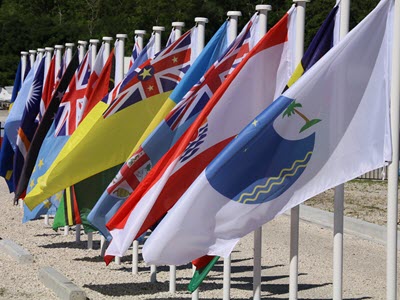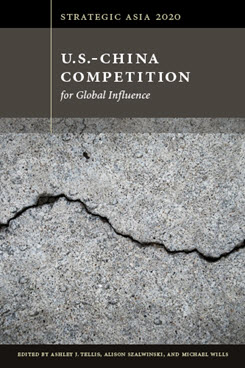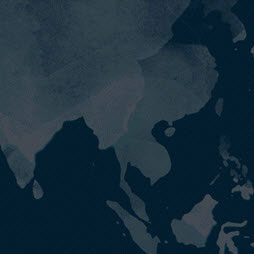The Emerging Geopolitical Competition in Oceania
As U.S.-China competition increases globally, Asia watchers have largely focused on the effects of this competition in East and Southeast Asia. But in Oceania, China has made significant inroads through trade, infrastructure development, and diplomacy—in the process eroding the influence of the United States and its key regional partners, Australia and New Zealand.
Johnny Morreale spoke with Michael Wesley, Deputy Vice-Chancellor International at the University of Melbourne, about China’s activities in Oceania and the potential impact of great-power competition on the region’s stability. Dr. Wesley is the author of the chapter “Oceania: Cold War Versus the Blue Pacific” in Strategic Asia 2020: U.S.-China Competition for Global Influence.
In your chapter in the new Strategic Asia volume, you describe the contest between China, on one side, and Australia, New Zealand, and the United States, on the other, as a new Cold War in Oceania.
The competition between the United States and its allies and China in Oceania and elsewhere in the Pacific has several parallels with the original Cold War. At its core, it involves the avoidance of direct military conflict in favor of a zero-sum competition for geographic advantage, resulting in all-out competition for the alignment of noncommitted states in strategically crucial zones.
There are also elements of technological competition as was the case during the original Cold War. In particular, China’s challenge to Western telecommunications systems, manifested through the Chinese company Huawei’s bids to build mobile telephone and internet infrastructure, has been perceived and countered in Oceania as a direct national security threat.
Third, there is an increasingly ideological edge to this competition. The United States and its allies have portrayed China’s Belt and Road Initiative in ideological terms, warning recipient countries of hidden Chinese agendas to load them with unsustainable debt and trap them into alignment with Beijing’s interests. The ideological influence on the competition has also become manifest within the United States, Australia, and New Zealand. Voices calling for a more balanced approach to China are increasingly treated with suspicion, and so subject to self-censorship.
Why has the Pacific Islands region drawn greater attention from China, Australia, New Zealand, and the United States in recent years?
The South Pacific has started to become subject to the same intense strategic competition between China and the United States and its allies that has affected the rest of the island chain stretching from Japan to Polynesia since the mid-1990s. The essence of the competition is threefold.
First, the Pacific island chain (dubbed the “first island chain”) has been hitherto controlled by jurisdictions either allied or strongly aligned with the United States. This affects China’s capacity to project unchallenged naval power out into the Pacific, a capacity that Beijing sees as essential for securing Chinese territory from hostile attention.
Second, the island chain is crucial to the United States’ ability to counter China’s asymmetric challenge to its naval access to the western Pacific. Beijing has developed interlocking military capabilities (missiles, sensors, submarines) that have seriously raised the risks to U.S. naval assets operating in the western Pacific. Washington has responded by seeking to use dispersed territories to position forces that can do the same thing to Chinese naval assets. Some of these territories are in the South Pacific (Australia certainly, but potentially Papua New Guinea and other island nations).
Third, China relies heavily on ocean-borne supplies of energy from the Persian Gulf, which currently have to traverse the narrow and increasingly congested (and potentially contested) straits through Southeast Asia. In anticipation of escalating tensions and naval competition raising the risks of transit through these sea lanes, Chinese strategists have probably considered a less crowded route, to the south and east of Australia, as an alternative. In this scenario, submarine forces and maritime bases in the Indian Ocean and the South Pacific have been given increasing value.
How do the Pacific Island states view this heightened attention?
Most Pacific Island states welcome the increased attention, which they see as for the first time pitting several wealthy countries in competition with each other to curry favor with regional states. Solomon Islands and Vanuatu, for example, have been able to extract highly favorable communications infrastructure deals from Australia after first agreeing to a deal for Huawei to serve as a provider.
However, Pacific Island governments have refused to buy into the polarizing logic of this increased attention. The more outspoken leaders have stated that they welcome China’s interest and will continue to build ties with Beijing, while still maintaining close relations with Canberra, Wellington, and Washington. Some leaders have even seen the competition as an opportunity to ensure that the Pacific is no longer a passive recipient of the strategic designs of the metropolitan powers, but is a consulted participant in the region’s security frameworks.
With this in mind, the leaders of the Pacific Islands Forum have announced the Boe Declaration, which draws attention to nontraditional security issues such as climate change and transnational crime, as an explicit alternative to the Cold War–style framing of the United States and its allies. Climate change in particular is an issue that has pitted Pacific Island states against the United States and Australia. Many low-lying atolls face the imminent threat of inundation, and countries such as Kiribati have seen their freshwater tables rendered unusable thanks to the encroachment of sea water. The island members of the Pacific Islands Forum have become vocal advocates for strong global action on climate change. This has put them at odds with both the United States, which has withdrawn from the Paris Agreement, and Australia, one of the world’s largest exporters of coal.
How has the U.S.-China rivalry affected Australia’s efforts to maintain influence in Oceania? Have the revelations about attempted Chinese influence operations in Canberra changed Australia’s approach to the region?
Australia’s perceptions of China have become markedly more apprehensive over the past five years. Before this, while Australia was concerned about China’s growing wealth and power, this was tempered by the unalloyed benefits that trade with China brought to the Australian economy.
However, a series of revelations concerning Chinese cyberhacking of Australian institutions, combined with perceptions of the growing authoritarianism of the Xi Jinping regime and the assertive Chinese actions in the South China Sea, have served to smother the effect of still-positive economic relations in Canberra. Australia has taken a series of assertive actions designed to send a clear message to Beijing: the passing of a counter-foreign interference law, the banning of Huawei from bidding to build Australia’s 5G mobile phone network, and regular and clear denunciations of China’s claims and actions in the South China Sea and the South Pacific.
This feeling of threat has reoriented Canberra’s approach to the South Pacific. Australia has announced a “Pacific step up,” which has seen the country concentrate almost all of its bilateral aid spending on the South Pacific (ill-advisedly diverting much away from Southeast Asia). Canberra has also announced a raft of security initiatives designed to integrate Pacific nations’ security frameworks closely with its own. The major weakness in Australia’s approach to the Pacific is its relatively passive stance on climate change mitigation, which stands in stark contrast to the existential threat of climate change. This situation has seriously compromised its legitimacy and leadership in the region.
What are the implications of a prolonged U.S.-China competition in Oceania for the region’s long-term stability?
Prolonged U.S.-China competition in Oceania poses several potential challenges. The most obvious is polarization, if different Pacific countries begin to choose to side strongly with either China or the United States and its allies. Already several countries, including Vanuatu and Samoa, have become outspoken supporters of China’s interests in the South Pacific. Polarization would be highly damaging to the region and its people, who have relied on the solidarity of small island states to deliver important collective outcomes. Polarization could also conceivably occur internally in the states of the Pacific. Policy toward China has already become a major political divide in states such as Papua New Guinea and Vanuatu; such divisions could create opportunities for significant foreign manipulation of domestic politics.
Michael Wesley is Deputy Vice-Chancellor International at the University of Melbourne in Australia and author of the chapter “Oceania: Cold War Versus the Blue Pacific” in Strategic Asia 2020: U.S.-China Competition for Global Influence.
This interview was conducted by Johnny Morreale, an Editorial Assistant at NBR.
RELATED PUBLICATION
Strategic Asia 2020:
U.S.-China Competition for Global Influence





